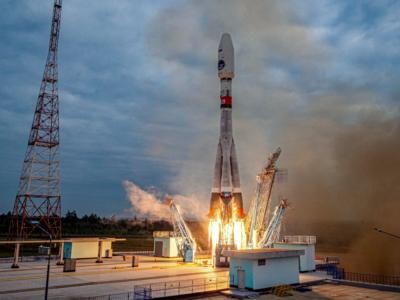Wed, Aug 23, 2023
Russia Tries “Stealing a March” on Spacefaring Community only to Fall Flat
Russia’s first attempt at establishing a lunar presence in almost 50 years ended in disappointment when their tiny, uncrewed lander impacted the surface following a failed orbital maneuver.

Luna 25, named to establish some continuity with decades of Soviet moon missions under the old space race program, would have been a landmark for the country’s space program. Their timeline gained notice in the international spacefaring community as a sneaky way to steal 3rd base amid a handful of competing missions, each attempting to survey the same landing area for similar purposes. If successful, Russia’s Lunar 25 would have landed shortly before India’s Chandrayaan-3, bolstering the image of Russia and Roscosmos on the world stage as competent, mission-ready purveyors of space services that can go toe-to-toe with the best of NASA and the ESA.
The Luna 25 mission was aimed at the southern pole, hoping to gauge the presence of “water ice” in the region as a small, early precursor to eventual settlements or landings there. If present, the water could serve as an invaluable feedstock of provisions for future missions, providing potable hydration, the constituent elements for breathable atmosphere, and even rocket fuel.
The Lunar south pole is an area of interest for many countries and programs hoping to find the same, India’s Chandrayaan-3 is next up to attempt Lunar touchdown in the coming days, launched on July 14th to the same southern pole to assess the mineral composition of the lunar surface. The mission’s predecessor, Chandrayaan-2, ended in a similar fate to Luna 25, deploying its orbiter but losing the lander in the touchdown attempt. Before tha, a private space startup, ispace, failed its own lunar landing too. The rougher, craggier region makes attempted landings more perilous than the stereotypical missions to well-known lunar landmarks like the “Sea of Tranquility”, and despite everyone’s best engineering efforts nobody has been able to stick the landing just yet.
More News
Also: Netherlands Donates 18 F16s, 2 737s Collide On Ramp, E-7 Wedgetail Cut, AgEagle's 100th In S Korea The Pilot and Aircraft Privacy Act was introduced in the House by Represent>[...]
Pilot Also Reported That Due To A Fuel Leak, The Auxiliary Fuel Tanks Were Not Used On June 4, 2025, at 13:41 eastern daylight time, a Piper PA-23, N2109P, was substantially damage>[...]
Have A Story That NEEDS To Be Featured On Aero-News? Here’s How To Submit A Story To Our Team Some of the greatest new stories ANN has ever covered have been submitted by our>[...]
From 2023 (YouTube Edition): Reflections on War’s Collective Lessons and Cyclical Nature The exigencies of war ought be colorblind. Inane social-constructs the likes of racis>[...]
What Goes Around, May Yet Come Back Around, Klyde FMI: www.klydemorris.com>[...]
 Airborne 06.30.25: US v ADS-B Misuse, Natl STOL Fire, Volocopter Resumes
Airborne 06.30.25: US v ADS-B Misuse, Natl STOL Fire, Volocopter Resumes NTSB Prelim: Piper PA-23
NTSB Prelim: Piper PA-23 ANN FAQ: Submit a News Story!
ANN FAQ: Submit a News Story! Classic Aero-TV: One Mans Vietnam
Classic Aero-TV: One Mans Vietnam Klyde Morris (06.30.25)
Klyde Morris (06.30.25)



